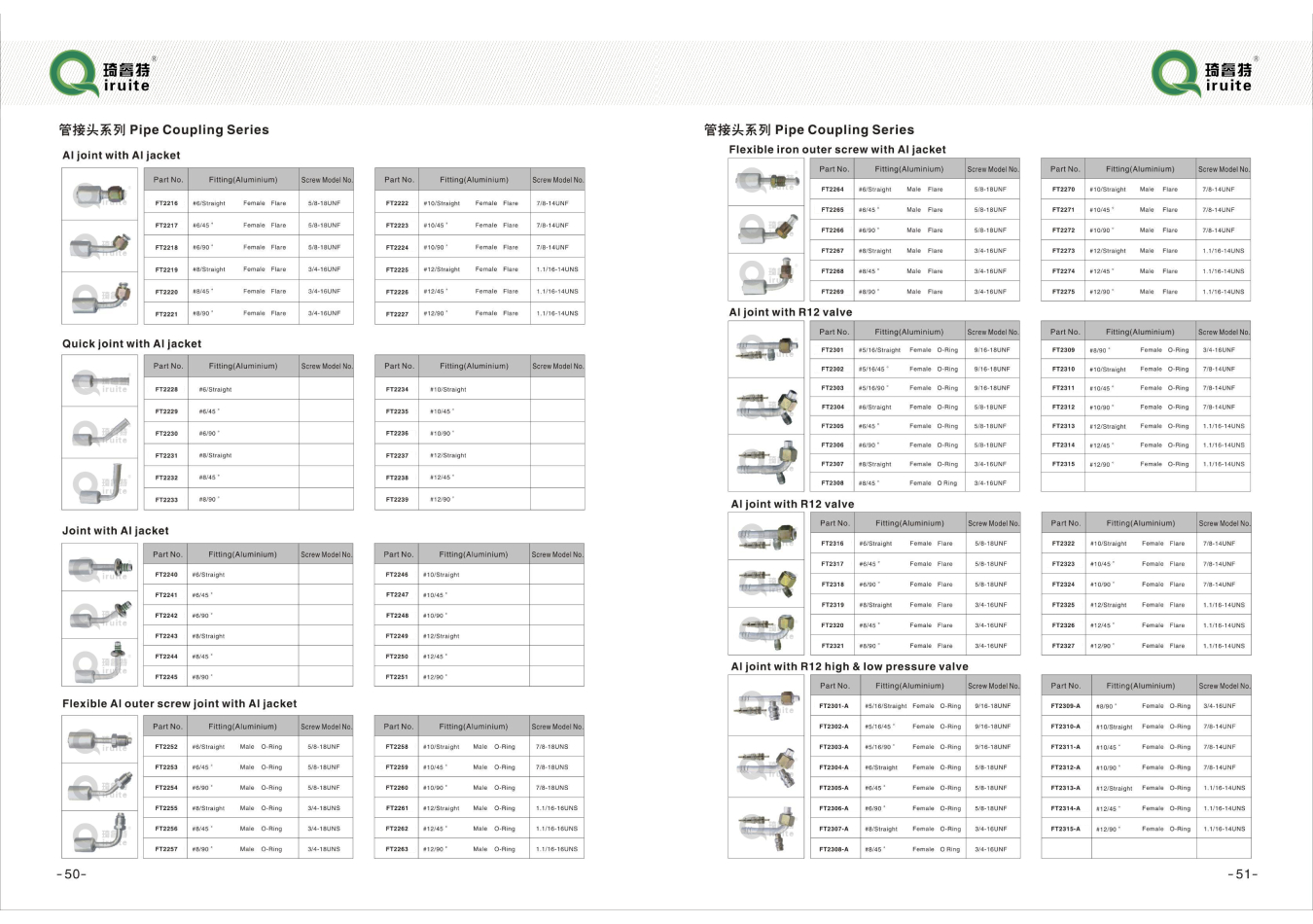car air conditioning hose fittings
Understanding Car Air Conditioning Hose Fittings A Key Component in Automotive Cooling Systems
In modern vehicles, maintaining a comfortable interior temperature is essential, especially during hot summer months. One of the critical components of the automotive air conditioning system is the hose fittings, which play a vital role in ensuring the efficient function of the entire system. This article will explore car air conditioning hose fittings, their purpose, types, and maintenance tips.
Air conditioning systems in cars generally consist of several components the compressor, condenser, evaporator, and the hose fittings that connect these parts. The primary function of hose fittings is to transport refrigerant—the fluid responsible for cooling—from one component to another. The reliability and performance of these hose fittings significantly impact the efficiency of the air conditioning system.
Hose fittings come in various shapes and sizes, designed to accommodate different types of vehicles and air conditioning configurations. Typically, they are made from materials such as rubber or metal, chosen for their durability and ability to withstand high pressure and temperature variations. One common type is the crimped fitting, which involves attaching a metal sleeve to the hose using a crimping tool. This method ensures a tight and leak-proof connection, essential for maintaining the pressure needed for effective cooling.
car air conditioning hose fittings

Another common fitting type is the barbed fitting, characterized by protruding ridges that help secure the hose. This type is often used in low-pressure applications. Additionally, quick connects or snap fittings are increasingly popular in modern vehicles due to their convenience, allowing for quick assembly and disassembly without the need for special tools.
As with any automotive component, the longevity and effectiveness of hose fittings can be compromised by wear and tear. Factors such as exposure to extreme temperatures, vibrations, and exposure to chemicals can lead to degradation over time. Signs that your air conditioning hose fittings may need attention include refrigerant leaks, unexplained fluctuations in temperature, or strange noises coming from the air conditioning system.
Routine maintenance is crucial for ensuring optimal performance of your car's air conditioning system. Regularly inspecting the hose fittings for signs of wear, such as cracks or bulges, can help identify issues before they escalate into more significant problems. Additionally, ensuring that the fittings are tight and secure can prevent refrigerant leaks, which not only hinder the air conditioning system's efficiency but can also harm the environment due to the release of refrigerants.
In conclusion, car air conditioning hose fittings are a fundamental aspect of an automobile's cooling system. Understanding their function, types, and maintenance needs can enhance vehicle performance and passenger comfort. By regularly inspecting and maintaining these fittings, vehicle owners can ensure their air conditioning system operates efficiently and reliably throughout the hot summer months. Whether you are a car enthusiast or just someone looking to maintain their vehicle, taking the time to understand these components can lead to a much more enjoyable driving experience.
-
Ultimate Spiral Protection for Hoses & CablesNewsJun.26,2025
-
The Ultimate Quick-Connect Solutions for Every NeedNewsJun.26,2025
-
SAE J1401 Brake Hose: Reliable Choice for Safe BrakingNewsJun.26,2025
-
Reliable J2064 A/C Hoses for Real-World Cooling NeedsNewsJun.26,2025
-
Heavy-Duty Sewer Jetting Hoses Built to LastNewsJun.26,2025
-
Fix Power Steering Tube Leaks Fast – Durable & Affordable SolutionNewsJun.26,2025

